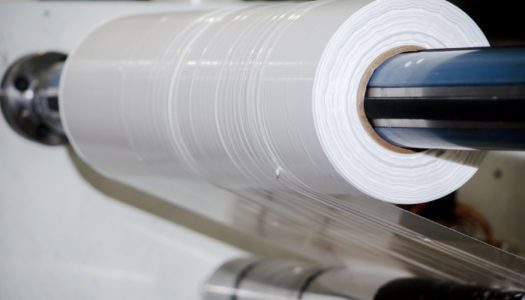
Share
We sat down with Andrew Reynolds, director of Business Publishing International Ltd., to hear more about his take on polyethylene market shifts over the last several years as well as what’s ahead. Reynolds has more than 40 years of experience in the polyethylene industry, making him one of the leading experts in all things plastic.
several years as well as what’s ahead. Reynolds has more than 40 years of experience in the polyethylene industry, making him one of the leading experts in all things plastic.
Q: Can you provide an overview of the trends we’ve seen in the last few years and how they’ve shaped today’s market?
A: Certainly volatility has become something of a mantra. In 2020, we suddenly had COVID, and following that was the supply chain disruption. It was a little bit of everything no one thought would happen.
Everyone thought the economies would almost collapse and there wouldn’t be much demand for material. One of the consequences of that was everyone destocked on polymer.
But one of the surprising things from the COVID era was it reinforced how important packaging is. Very rapidly, you realized there are still relatively strong demands. Then we fell into disruptions with plants in the southern U.S. being impacted by hurricanes. We then had polymer producers who had destocked frantically trying to restock, but the pace of demand was very strong. So they never actually managed to restock, then they had capacity issues.
2021 was an even stranger year because of the material shortages, but there wasn’t a market in the world that didn’t see an increase in the demand for plastics. Interestingly, the market that had the least growth was China. For the previous 25-25 years, China has been the engine that drove demand and development within our industry on a global basis.
We’re certainly seeing a reconsideration of the security in supply chains in a whole host of industries all over the world. The consequence of that is the old-fashioned economics, the western countries who had moved a lot of manufacturing to Asia and China in particular, are maybe reconsidering that.
Q: How could you predict how the polyethylene supply will be affected in the coming years, reflecting on all of that?
A: The situation in the last four months has completely changed. There’s been a lot more supply and prices are declining because of that. Polymer producers are starting to manage the supply-demand balance.
There’s also quite a lot of disruption to the supply chain, also because Russia has a surplus of polyethylene that it had been exporting to China, India, other parts of Asia and Europe. That shows the volatility of the supply chains that we have and the accepted routes of trade.
Q: What do you foresee happening in the North American market?
A: There’s a degree of maturity there. But the population is still growing. Consumer societies and convenience still drive a lot of things that go on. We still like to consume products and those products come packaged. Certainly, in a market like North America, there’s less of a trend flowing against plastics and packaging than what I’m seeing in Europe. It’s a much more forceful challenge because it’s not just brands and some consumers, but it’s politicians as well.
The only markets I think will struggle are those where there’s a degree of saturation – for example, pallet shrink film or stretch film. Add on top of that, there is clearly the increased use of recycled resins.
Q: What’s on the horizon for sustainability in the market?
A: Recycled resin demand is going to grow quite strongly. The problem everywhere is there’s not enough recycled resin for the demand. Actually getting as much as you would like isn’t very easy.
In 2021, with high resin prices, everyone wanted more recycled resin because it was not only perceived as sustainable, the thing to do, but you also hoped you could get it at a lower price than what you were paying for prime virgin resin. That’s not the situation today.
You’re really in a position where there are companies who may like to have a recycled resin. One, can they get it? And if they can, it’s going to be more expensive than a prime virgin resin. Therefore, do they have customers, or are we, as consumers, happy and willing to pay more for an item made from a recycled resin than a virgin resin?
We always underestimate the potential for plastics to grow. As long as I’ve been in the industry, I’ve seen people saying, oh, the best days are gone. There’s very little growth left. This is going to be a challenge going forward. And sure, there are challenges going forward, but this industry has had a remarkable track record of developing applications and continuing to grow. And I tend to feel that will still apply in the future.
Stay Informed On the Latest in PE Market Trends
Get the updates you need to stay on top of the latest news in polyethylene and plastics. Read our latest blog articles and be sure to subscribe.
